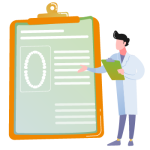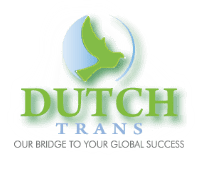
Dental Translation Services: Why You Need Them
29 Jun Dental Translation Services: Why You Need Them
Are you a dental professional looking to expand your services to patients who speak different languages? If so, you may benefit from utilizing dental translation services. These services can help bridge the gap between you and your non-English speaking patients, ensuring clear communication and accurate understanding of important dental information. In this blog post, we will discuss the significance of accurate dental translations, the importance of using such services, how to choose a dental translation service provider, the role of technology in dental translation, overcoming language barriers in dental care, and the future of dental translation services.
The Significance of Accurate Dental Translations
In the realm of dental care, the precision of language plays an indispensable role. Accurate dental translations go beyond mere word-for-word rendering; they encompass the nuanced communication of dental procedures, diagnoses, and care instructions in a manner that is culturally and linguistically appropriate for the patient. The stakes are high; inaccuracies in translation can lead to serious health repercussions, including misinterpretation of symptoms, mismanagement of dental conditions, and the implementation of incorrect treatments. For non-English speaking patients, understanding complex dental terminology in their native language can significantly demystify the dental care process, reduce anxiety, and foster a collaborative approach to their treatment plan. Furthermore, precise translations uphold the legal and ethical standards of informed consent, ensuring patients are fully aware of their treatment options and the associated risks. In an increasingly multicultural society, the ability to communicate effectively with a diverse patient base is not just a courtesy but a fundamental aspect of equitable healthcare delivery. Therefore, investing in high-quality dental translation services is not merely an operational consideration but a critical component of patient care that safeguards health outcomes and supports the integrity of the dental profession.

The Importance of Accurate Dental Translations
Accurate dental translations serve as a crucial bridge for comprehensive patient care and the overall success of a dental practice. By ensuring that all patients, regardless of their native language, have access to clear and precise information about their dental health and treatment options, dental professionals can significantly enhance patient engagement and trust. This heightened level of understanding can alleviate patients’ fears and anxieties about dental procedures, encouraging a more proactive approach to their oral health. Furthermore, the clarity provided by effective translation supports the decision-making process, empowering patients to make informed choices about their treatment paths.
For dental practices, the benefits of accurate translations extend into the operational aspects, contributing to a smoother workflow and more efficient patient management. When language barriers are effectively addressed, the risk of misunderstandings and the potential for errors diminish, leading to a safer and more productive dental care environment. Additionally, embracing dental translation services can broaden the patient demographic, attracting individuals from diverse linguistic backgrounds and thereby expanding the practice’s market reach. This not only fosters a more inclusive atmosphere but also positions the practice as a preferred provider in a competitive market.
Engaging with proficient dental translation services thus represents an investment in quality care and patient satisfaction, driving the success and growth of the dental practice while upholding its commitment to delivering exceptional and accessible dental care to every patient, regardless of language barriers.
How to Choose a Dental Translation Service Provider
Selecting the right dental translation service provider is pivotal for ensuring effective communication and the highest quality of care for patients speaking different languages. Begin by identifying providers that specialize in healthcare and, more specifically, dental care translations to guarantee that they are familiar with the complex terminology unique to the dental field. The expertise of translators in dental health is crucial for maintaining the integrity and accuracy of the translated material.
Another key factor to consider is the range of languages covered by the service. A provider that offers a wide selection of languages is preferable, especially if your dental practice serves a diverse community. Additionally, inquire about the credentials and qualifications of the translators, as well as the provider’s process for ensuring quality control. It’s essential that the translations are not only accurate but also culturally appropriate for the patient population you serve.
Turnaround times are equally important, as dental health issues often require timely communication. Choose a service that can deliver accurate translations within a timeframe that meets your practice’s needs without compromising on quality.
Cost is a practical consideration, yet it’s important to balance affordability with the quality and range of services offered. Some providers may offer competitive rates but at the expense of accuracy or turnaround time.
Finally, confidentiality and security protocols are paramount. The provider should have stringent measures in place to safeguard patient information throughout the translation process. This includes compliance with HIPAA (Health Insurance Portability and Accountability Act) or equivalent standards to ensure that patient data is handled with the utmost care and confidentiality.
By thoroughly vetting potential dental translation service providers based on these criteria, dental professionals can establish a partnership that enhances patient care and supports the practice’s operational needs effectively.
The Role of Technology in Dental Translation
The advancement of technology significantly enhances the capabilities of dental translation services. Modern translation software and sophisticated tools are at the forefront of this transformation, offering a myriad of benefits that were previously unattainable. These technological solutions are designed to optimize the translation process, ensuring that the specific and often complex dental terminology is consistently translated with high accuracy. Such technology also supports scalability, allowing dental practices to easily accommodate a growing and linguistically diverse patient base without sacrificing the quality of communication.
One of the most notable technological innovations in this field is the development of artificial intelligence (AI)-powered translation platforms. These platforms can learn from past translations, becoming more efficient and accurate over time. AI-driven tools are particularly adept at recognizing and translating the specialized vocabulary used in dental medicine, which is crucial for conveying precise treatment plans and care instructions to patients.
Moreover, technology facilitates real-time communication solutions. Tools like language translation apps and software that provide instantaneous interpretation services can significantly reduce the communication gap during dental consultations. This immediacy is vital in emergency situations or when making quick decisions is essential for patient care.
Another important aspect is the integration of technology that ensures the privacy and security of patient information during the translation process. With the increasing reliance on digital platforms, maintaining confidentiality and adhering to data protection regulations is paramount. Technological advancements in encryption and secure data transmission play a critical role in protecting sensitive patient information, aligning with the ethical and legal responsibilities of healthcare providers.
In sum, the integration of cutting-edge technology into dental translation services not only streamates the translation process but also elevates the standard of care provided to non-English speaking patients, ensuring no detail is lost in translation.
Overcoming Language Barriers in Dental Care
Language barriers, a common obstacle in the dental field, can hinder effective patient-provider communication, impacting patient care and outcomes. Dental translation services play a crucial role in surmounting these challenges, enabling practitioners to convey essential health information accurately. When dental professionals have access to these services, they can ensure that every patient, regardless of their primary language, comprehends their diagnosis, treatment plans, and preventive care recommendations. This clarity is vital for patient engagement, as it encourages questions and discussions, leading to informed decisions about their health care. Additionally, effective translation services can aid in the documentation process, ensuring that patient records are accurately maintained in multiple languages. This not only facilitates better follow-up care but also enhances the overall patient experience by fostering a sense of inclusion and respect for cultural diversity. Embracing dental translation services is an actionable step towards eliminating language barriers, ultimately promoting a more inclusive health care environment where every patient has the opportunity to receive equitable and compassionate dental care. More know about medical translation mistakes.

The Future of Dental Translation Services
The future of dental translation services hinges on enhancing patient-centered communication, particularly in addressing the diverse needs of patients with varying cultural backgrounds and sexual orientations. Effective communication with patients is crucial for improving medical care and patient outcomes. Health care professionals must possess strong communication skills, including interpreting facial expressions and addressing patient concerns, to ensure high-quality care. Systematic reviews and empirical evidence suggest that poor communication can adversely affect clinical outcomes and quality of life, highlighting the importance of physician-patient communication in medical encounters.
Integrating cultural competency training into dental education, similar to programs developed by Frankel RM, Beckett M, Elliott MN, and Tulsky JA, will be essential in fostering a patient-centered approach. With advancements in ITC Translations and Mars Translation, dental translation services can leverage observational studies and qualitative research to tailor interventions and reduce unmet concerns. This will not only improve patient-centered care approaches but also ensure that critical information, such as medical records and bad news, is communicated effectively. As dental practices increasingly adopt evidence-based practice and patient-centered behavior, the integration of advanced translation services will become a desirable health care priority, enhancing the overall patient experience and ensuring equitable access to dental care for all.
Effective communication in patient care is essential for improving clinical outcomes and the overall quality of life for patients, particularly those with advanced cancer. Empirical evidence and systematic literature reviews underscore the importance of patient-centered communication interventions in clinical consultations. Observational studies have shown that physician behavior, including postures during patient-physician consultations, can significantly impact health status and health care utilization.
Skills to training programs, such as those highlighted in the National Academy Press by Wilkes M. Reducing and Robinson JD, emphasize the need for therapeutic communication and handling difficult communication tasks, like delivering bad news to cancer patients. Qualitative studies have further validated the term patient-centered communication as a critical component of life care. Practice Portals provide an evidence base for these interventions, supporting oncologist-patient communication and nurse-patient communication during active treatment. As medical schools integrate these findings into their curricula, they aim to foster effective communication skills among future healthcare professionals, ensuring that medical records and clinical trials reflect patient-centered care approaches, ultimately enhancing doctor-patient communication and improving patient outcomes.
Looking forward, the landscape of dental translation services is poised for significant evolution, driven by rapid advancements in technology and a growing recognition of the need for personalized, culturally competent care. The integration of artificial intelligence and machine learning into translation platforms promises to further refine the accuracy and efficiency of these services, making real-time translation more accessible and reliable than ever before. Additionally, as dental practices strive to meet the needs of an increasingly diverse patient population, there is likely to be a surge in demand for translation services that cater specifically to the dental field, with a focus on specialized terminology and patient education materials. This specialization will enhance the patient experience by ensuring that communications are not just accurately translated, but also tailored to the unique cultural contexts and health literacy levels of each patient. Moreover, with the ongoing emphasis on patient-centered care, the future of dental translation services will also involve greater patient involvement in the development of translation tools and resources, ensuring that these innovations truly meet the needs of the communities they serve. As we move forward, embracing these advancements and innovations will be key for dental professionals aiming to provide equitable, effective care to all patients, regardless of language. More read about medical translation.
FAQ’s
Why are dental translation services crucial in healthcare settings?
Dental translation services are crucial because they facilitate clear communication between dentists and patients who speak different languages. This clarity enhances the quality of care by ensuring that diagnoses, treatment plans, and post-care instructions are accurately conveyed and understood.
How do dental translation services contribute to patient safety?
Dental translation services contribute to patient safety by accurately translating medical histories, symptoms, and treatment procedures into patients’ native languages. This accuracy helps prevent misunderstandings and errors, reducing the risk of incorrect treatments and improving overall patient satisfaction.
What are the specific benefits of using professional dental translators?
Professional dental translators bring specialized knowledge of dental terminology and procedures to their translations. This expertise ensures precise and reliable communication between dental professionals and patients, bridging language gaps effectively in healthcare settings.
In what contexts are dental translation services most commonly used?
Dental translation services are commonly used during various dental procedures such as consultations, surgeries, hygiene appointments, and patient education sessions. They are essential whenever language differences could impede effective communication between dental staff and patients.
How can dental practices ensure they are choosing the right translation services?
Dental practices should choose translation providers with experience in healthcare, particularly in dental terminology. It’s important to look for certifications or credentials that demonstrate the provider’s proficiency in delivering accurate and culturally sensitive translations. This ensures compliance with healthcare standards and enhances patient care outcomes.

